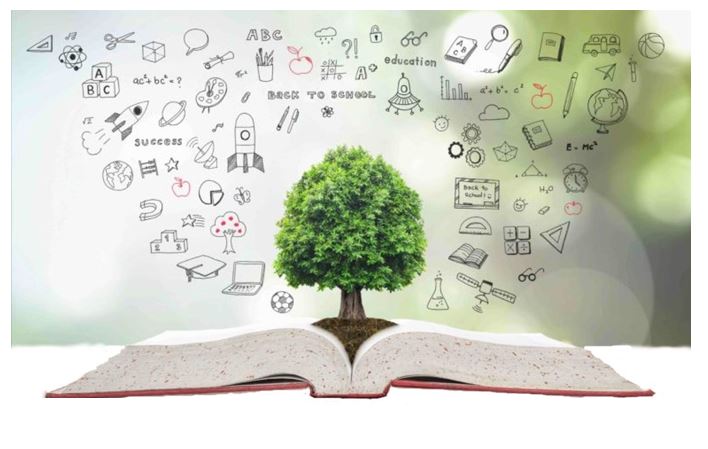In this era of the digital, scientific, and technological world our life is fully influenced by technology and its components in handling and coping with day-to-day affairs, on both professional as well as personal front. The same applies in the field of education, and technology helps to make learning more comprehensive and easy.
To know and understand the components of educational technology, we should first understand what we mean by education, technology, and educational technology and what is its significance and importance in today’s digital world.
The Meaning Of Educational Technology
Education involves equipping and enriching a child’s mind and preparing him to face the world, through various teaching methods and strategies. In earlier times, a very traditional method for imparting education was followed. But with time lot of technological progress has been made and as we have entered this technological world the traditional method of spreading education is hardly found and various technological methods have been adopted to make learning impactful.
So basically educational technology is a science encompassing scientific methods and techniques and the usage of hardware and software to accomplish educational goals. Uno Cygnaeus is considered to be the father of educational technology. Hence, technology is used as a tool as well as a medium to enhance the teaching and learning process.
Five Components Of Educational Technology
Educational technology is not just a term but is a field that comprises five major components. Let’s explore them.
1. Hardware
In educational technology, hardware components include mechanical equipment, materials, and electronic devices. Thus all physical material that is used during the learning process comes under this umbrella and basically, this is the byproduct of the advancement and development of technology in the present era.
The hardware component of educational technology comprises electronic equipment like projectors, computers, laptops, televisions, and motion pictures.
Projectors are very useful for getting a better understanding of the subject since the slides, graphs, diagrams, and maps can be seen in an enlarged form which helps to get a better understanding of the subject with more clarity.
Computers and laptops are the most essential electronic device which is used to give inputs and get respective outputs. It is the most required electronic device for all learners whether in school, college, institutes, or training centers.
, Television and motion pictures also have various technology-rich educational programs that stimulate the auditory as well as the visual sense of the learner and thus the learning is more impactful.
2. Software
This involves a scientific and systematic application of research gathered from the various required educational fields. In simple language, it includes all principles, texts, instructions, programs, and video clips that are used in the teaching process and imparted through the hardware.
Software tools comprise learning materials, teaching models, teaching strategies, programmed instructions, and evaluation tools. Software technology is used for developing hardware devices.
3. Methods and implementation
With the inclusion and implementation of appropriate devices, techniques, and tools, the knowledge is imparted and the ways are micro-teaching, programmed learning, personalized system of instruction, team teaching, and evidence-based learning.
Thus the implementation of these techniques and processes facilitates the application of cognition, memory, and senses and thus leads to enhanced teaching practices resulting in better learning outcomes.
4. Manpower and management
Educational technology is managed by manpower. Without manpower, it is not possible to execute educational technology at all. Professionals with immense knowledge of different fields and domains come together to prepare, impart, and manage the whole learning process.
5. Evaluation and continuous innovation
A continuous evaluation is very necessary from time to time to check and analyze the working of the whole process. Learning outcomes can only be meaningful if there is continuous evaluation and improvement in the adoption of the new technology. Continuous exploration and experimentation of new devices and technology are a must. There should be an assessment of learning outcomes and accordingly address shortcomings or make incremental changes in the methodology as and when required.
Conclusion
Educational technology has indeed contributed majorly to igniting the teaching field. By utilizing the relevant and latest electronic devices and technologies it has not only helped with classroom management but also upgraded the learning management system. It also plays a major role in establishing a strong connection and collaborative communication with teachers and students.
Again, it not only helps in assessing student learning but also expands their learning through various social media and also helps them in building a professional learning network. The teachers should explore this area very minutely and in a detailed way and select the tools, devices, and applications which is best suited for their students. Along with the selecting ability, they should be creative and imaginative enough, so that they can utilize these applications to the maximum in their teaching practice and also self-evaluate as well as evaluate the whole process from time to time to check out the scope for improvement.

Related Posts
What is a juice-jacking attack? How can we be safe from such attacks?
Getting the right dashcam for your needs. All that you need to know
WhatsApp iPad App Gets Major Overhaul, Adds New Communities Feature
Moto G85 5G launched in India but is unlikely to beat VIVO or XIAOMI
Rise of deepfake technology. How is it impacting society?
Smartphone Apps Get Smarter- Meta AI’s Integration Across Popular Platforms